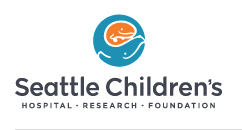Guanfacine for the Treatment of Hyperactivity in Pervasive Developmental Disorder
| Status: | Completed |
|---|---|
| Conditions: | Cognitive Studies, Neurology, Psychiatric |
| Therapuetic Areas: | Neurology, Psychiatry / Psychology |
| Healthy: | No |
| Age Range: | 5 - 14 |
| Updated: | 4/21/2016 |
| Start Date: | December 2011 |
| End Date: | March 2014 |
The purpose of this study is to determine whether guanfacine (trade name Intuniv) by itself
or in combination with methylphenidate (also known as Ritalin) is helpful for treating
hyperactivity in children and adolescents with a Pervasive Developmental Disorders (PDDs).
or in combination with methylphenidate (also known as Ritalin) is helpful for treating
hyperactivity in children and adolescents with a Pervasive Developmental Disorders (PDDs).
Pervasive Developmental Disorders (PDDs) are a group of conditions that includes Autistic
Disorder, Asperger's disorder and so called Pervasive Developmental Disorder - Not Otherwise
Specified. Children with PDD show delays in speech and language and reduced social
interaction. Some children with PDD have also have problems with overactivity, impulsiveness
and distractability. These behaviors are seen in children with Attention Deficit
Hyperactivity Disorder (ADHD). Extended release guanfacine (Intuniv) is FDA-approved for the
treatment of children with ADHD. The purpose of this study is to evaluate whether Intuniv is
an effective treatment for ADHD symptoms in children with PDD.
This study has four parts: an 8-week double-blind trial, an 8-week blinded extension phase
(for positive responders only), an 8-week open-label trial, and a 4-week add-on study.
Following confirmation of eligibility, participants will be randomly assigned to receive
either guanfacine or placebo in the 8-week double-blind trial. Children who show improvement
after 8 weeks of treatment will continue on their assigned treatment for an additional 8
weeks (blinded extension phase). Children who show partial improvement with guanfacine will
be offered 4 weeks of treatment with guanfacine plus methylphenidate (add-on study).
Children who show no improvement on placebo will be offered 8 weeks of treatment with
guanfacine (open-label trial). Children who show no improvement on guanfacine will exit the
study.
Side effects and treatment response will be assessed at regularly scheduled visits.
The study protocol was formally revised with the Yale University IRB in May 2013 to address
an early close to enrollment due to a reduction in funding. The original anticipated
enrollment numbers of 112 subjects was reduced to 60 subjects. The study statistician was
consulted prior to enrollment closure to address any issues related to statistical power and
the adjustments made to the final statiscal analysis plan.
Disorder, Asperger's disorder and so called Pervasive Developmental Disorder - Not Otherwise
Specified. Children with PDD show delays in speech and language and reduced social
interaction. Some children with PDD have also have problems with overactivity, impulsiveness
and distractability. These behaviors are seen in children with Attention Deficit
Hyperactivity Disorder (ADHD). Extended release guanfacine (Intuniv) is FDA-approved for the
treatment of children with ADHD. The purpose of this study is to evaluate whether Intuniv is
an effective treatment for ADHD symptoms in children with PDD.
This study has four parts: an 8-week double-blind trial, an 8-week blinded extension phase
(for positive responders only), an 8-week open-label trial, and a 4-week add-on study.
Following confirmation of eligibility, participants will be randomly assigned to receive
either guanfacine or placebo in the 8-week double-blind trial. Children who show improvement
after 8 weeks of treatment will continue on their assigned treatment for an additional 8
weeks (blinded extension phase). Children who show partial improvement with guanfacine will
be offered 4 weeks of treatment with guanfacine plus methylphenidate (add-on study).
Children who show no improvement on placebo will be offered 8 weeks of treatment with
guanfacine (open-label trial). Children who show no improvement on guanfacine will exit the
study.
Side effects and treatment response will be assessed at regularly scheduled visits.
The study protocol was formally revised with the Yale University IRB in May 2013 to address
an early close to enrollment due to a reduction in funding. The original anticipated
enrollment numbers of 112 subjects was reduced to 60 subjects. The study statistician was
consulted prior to enrollment closure to address any issues related to statistical power and
the adjustments made to the final statiscal analysis plan.
Inclusion Criteria:
- Diagnosis of PDD (PDD-NOS, Asperger's Disorder, Autistic Disorder)
- Hyperactivity
- Between ages 5 years 0 months and 13 years 11 months.
- Weight >/= 15 kg (33 lb)
- A mental age of at least 18 months
Exclusion Criteria:
- Prior failed treatment with an adequate trial of guanfacine in the last 2 years
- Concurrent treatment with another psychoactive medication
We found this trial at
5
sites
Emory University Emory University, recognized internationally for its outstanding liberal artscolleges, graduate and professional schools,...
Click here to add this to my saved trials
University of California at Los Angeles The University of California, Los Angeles (UCLA) is an...
Click here to add this to my saved trials
Click here to add this to my saved trials
Yale University Yale's roots can be traced back to the 1640s, when colonial clergymen led...
Click here to add this to my saved trials
Seattle Children's Hospital Seattle Children’s Hospital specializes in meeting the unique physical, emotional and developmental...
Click here to add this to my saved trials



